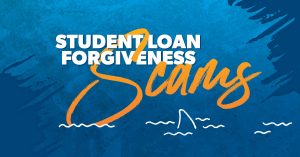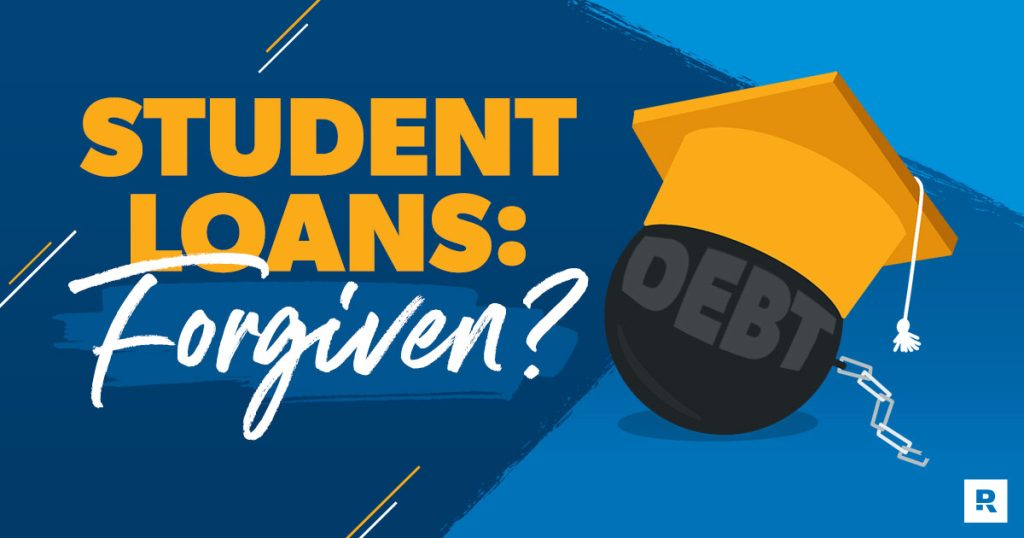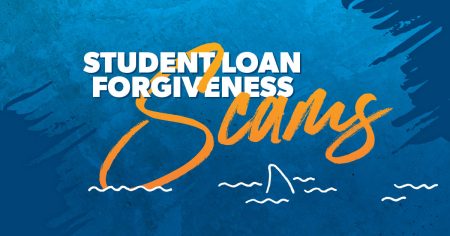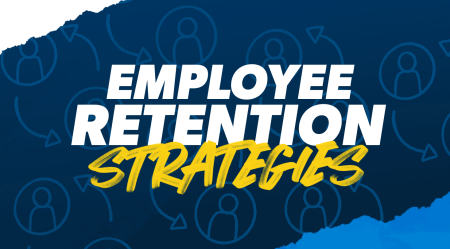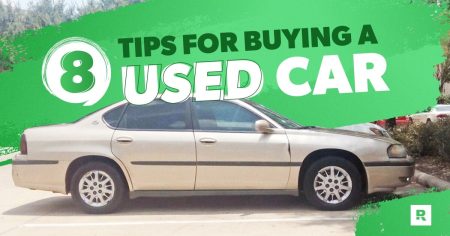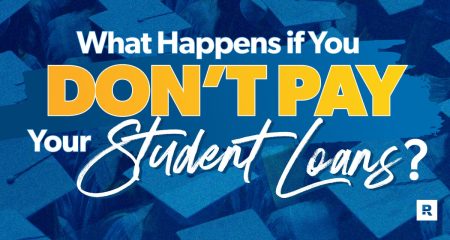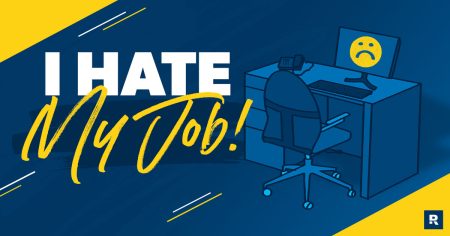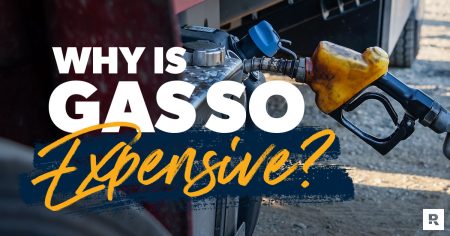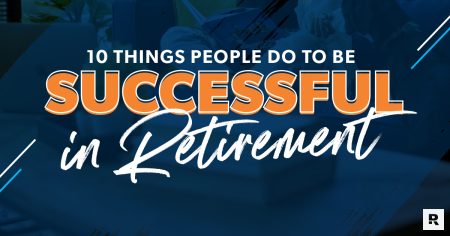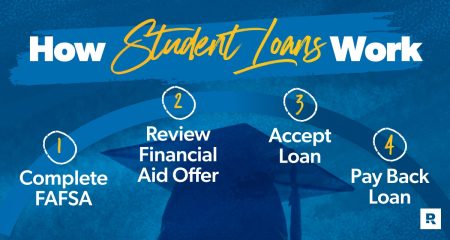Remember when you were first trying to figure out life after high school? People were expecting you to make all these life-altering decisions—like what college to go to, what to major in, and what dream job to chase after. Somewhere along the way, you were probably sold the lie that student loans were the only way to pay for college.
But now, your college days are behind you and you’re staring at a mountain of student loan debt, wondering if you’ll ever be able to pay it all off. And trust me, you’re not the only one asking, Should I apply for student loan forgiveness?
The answer: While there are some ways to have your student loans canceled, student loan forgiveness isn’t nearly as reliable as it may seem.
Listen, I don’t want you (or anyone) to have to carry around the burden of student loans. But you need a plan that actually works—not one that will leave you more disappointed in the end. I’m here to tell you everything you need to know about student loan forgiveness so you can make the best decision for your situation and get rid of your student loan debt for good.
What Is Student Loan Forgiveness?
How Does Student Loan Forgiveness Work and Who Qualifies?
Public Service Loan Forgiveness
Teacher Loan Forgiveness
Total and Permanent Disability Discharge
Borrower Defense to Loan Repayment
Closed School Discharge
Should I Apply for Student Loan Forgiveness?
The Alternative to Student Loan Forgiveness
What Is Student Loan Forgiveness?
Student loan forgiveness first came on the scene in 2007 to help graduates with their student loan debt.1 (By then, the total federal student loan debt was over half a trillion dollars. And it’s only continued to grow out of control.)
Up until recently, student loan forgiveness had only been available through federal programs with very specific requirements (like making a certain number of payments or working for an approved employer). When people want to know about applying for student loan forgiveness, they’re usually talking about these programs.
But President Biden recently introduced a new student loan forgiveness plan that would cancel a portion of federal student loan debt for any borrower who makes below a certain amount of money each year. While this plan opens the possibility for more people to have their student loans forgiven, it’s technically a one-time student debt relief plan—not an actual forgiveness program.
It may also be a little confusing when you hear the terms student loan forgiveness, cancellation and discharge thrown around in the same sentence. What’s the difference? Well, they all pretty much mean the same thing—that you no longer have to pay your student loans. But forgiveness or cancellation is when you don’t have to make any more payments on your student loan because of your job, income or the specific payment plan you’re on. And loan discharge is when you don’t have to make any more payments on your loan because of other situations, usually beyond your control, like a permanent disability or your college closing down.
How Does Student Loan Forgiveness Work and Who Qualifies?
Not all student loan forgiveness programs are created equal. Each has its own set of rules and separate application process. (If it already sounds complicated, that’s because it is.) And it doesn’t help that these programs are constantly being tweaked.
Ready to get rid of your student loans once and for all? Get our guide.
But let’s walk through the most common student loan forgiveness programs and their current requirements. Keep in mind, these are only for federal student loans—private student loan forgiveness is a whole other beast.
Public Service Loan Forgiveness
When people talk about student loan forgiveness, they’re usually talking about Public Service Loan Forgiveness (PSLF). You might hear people say, All you have to do is work for a nonprofit for 10 years and your student loans are taken care of. Hmm, it’s not quite that simple. And you still have to keep paying on your student loans in the meantime.
In order to qualify for public service loan forgiveness, you must:2
- Have direct loans
- Work full time for a qualifying employer, like the government or a 501(c)(3) nonprofit
- Have an income-driven repayment plan (that just means the amount of each monthly payment is based on the amount of money you make)
- Make 120 monthly payments
- Never miss a payment for 10 years
A lot of people apply for PSLF, but the odds of actually having your loans forgiven through this program are extremely low. Between November 2020 and July 2022, there were 1,684,233 total PSLF applications, and only 24,743 of them met the proper requirements.3
That means less than 2% of those who apply for public service loan forgiveness are approved for it!
And even if you’re one of the “chosen ones” who manages to actually get an approval letter, you might want to tread lightly. Some borrowers who previously qualified for the program have received letters of denial years later.4 That means you could spend 10 years in a low-paying job, only to find out you still owe the full amount of your student loans. Not. Cool.
Teacher Loan Forgiveness
If you’re a teacher, you might be able to ditch up to $17,500 of your federal student loans. But there are a few things you need to do before you can get any part of this deal.
In order to apply for teacher loan forgiveness, you must first:5
- Have Direct Loans or Federal Family Education Loans, either subsidized or unsubsidized
- Teach full time for five academic years in a row
- Have taken out the loan before the end of your five teaching years
- Teach low-income students at an educational service agency or at the elementary, middle or high school level
- Make sure you’ve never had an outstanding balance on your loan (that means not a single missed payment!)
Even after you’ve checked all the right boxes, your application may not get approved. And you should know that the only way you can get up to $17,500 forgiven is if you’re a math, science or special education teacher—any other teachers can only get up to $5,000 forgiven. Listen, teaching is a noble and much-needed profession. But if you’re only doing it because you’re banking on the government paying off your student loans, you may end up very disappointed.
Total and Permanent Disability Discharge
So, this one obviously comes at a cost—but if you have a disability that leaves you totally or permanently disabled, your federal student loans or your Teacher Education Assistance for College and Higher Education (TEACH) Grants could be discharged.
In order to qualify for total and permanent disability (TPD) discharge, you have to prove your disability status through either the Veterans Affairs office, the Social Security Administration office or your physician.
But you should know that if your loans do get discharged, you’ll be monitored for the next three years to make sure you’re actually disabled. And if that changes at all during those three years, you’ll have to start paying on your loans again. So, if you’re thinking about breaking your own leg to avoid student loan payments—save yourself the medical bill.
Borrower Defense to Loan Repayment
If your school misled you or violated certain state laws, you might be able to have some or all of your student loans discharged. You only qualify for this if your school committed fraud related directly to your federal student loan—like claiming more graduates got jobs straight out of their program than actually did.
Borrower defense usually happens automatically for those who were affected on a large scale (like the recent cancellations for those who attended Corinthian Colleges or ITT Tech).6 But if you feel like you have an individual case for borrower defense and want to apply on your own, you’ll have to wade through a lot of legal jargon and documentation. And while it’s possible that you could have your loans discharged, proving that your school committed fraud isn’t easy.
Closed School Discharge
If you lost money because your school closed before you could get a degree, you may qualify for closed school discharge if:7
- You were enrolled when your school closed
- You were on an approved leave of absence when your school closed
- Your school closed within 120 days after you withdrew, and you took out loans before July 1, 2020
- Your school closed within 180 days after you withdrew, and you took out loans on or after July 1, 2020
Like borrower defense to repayment, you usually don’t have to do anything to get this kind of cancellation. But if the U.S. Department of Education doesn’t automatically send you a notice of your loans being discharged, you may need to send in your own application.
Biden’s New Forgiveness Plan
Biden’s recently announced a debt relief plan that would cancel up to $10,000 of federal student loan debt per borrower.8 The only requirement? Make less than $125,000 a year. And if you received a Pell Grant for college, you can get another $10,000 forgiven for a total of $20,000 taken off your student loan balance.
Unlike the government forgiveness programs I already mentioned, borrowers don’t have to do anything to receive this relief, except apply (applications are supposed to be available sometime this October).
It’s still not clear if Biden can actually forgive student loans without going through Congress. But if his plan does go through, sweeping student loan forgiveness like this is most likely a one-and-done sort of thing (aka not something you should count on happening again). And even if you qualify for this relief, chances are you’ve got more student debt than Biden’s planning to forgive.
Still have questions about who qualifies for student loan forgiveness? You can check out all the details on the Federal Student Aid website. And watch out for student loan forgiveness scams!
Should I Apply for Student Loan Forgiveness?
By now, you’ve probably figured out that student loan forgiveness isn’t exactly a nonstop ticket to freedom.
There are a lot of eligibility hoops you have to jump through—most of which can turn on a dime. And the last thing you want to do is stay in a low-paying job for 10 years in the hope your loans will be forgiven, only to realize later you did all that work for nothing. Especially when you could’ve paid off your student loan debt in half the time (and saved a ton of money in interest)!
But should you apply for student loan forgiveness anyway? Here’s my advice: If you’ve already put in the hours at an approved job and made the required payments, and you think applying for forgiveness will help you come out ahead—I say apply. But again, just because you meet all the requirements doesn’t mean you’re guaranteed to have your loans forgiven (in fact, the majority don’t).
And if you qualify to have your loans forgiven under Biden’s new plan, go ahead and apply once those applications are available. But remember: Nothing’s for sure until you see your student loan balance go down.
Otherwise, if you’re thinking about starting down the forgiveness path, hoping you can apply years from now, don’t. A lot can happen between now and then (both with policy changes and your own situation). And you’re better off making your own plan—one that won’t have you waiting on the White House.
Now that we’ve cleared that up, let me tell you about a faster (and 100% more reliable) way to get rid of your student loans.
The Alternative to Student Loan Forgiveness
Instead of counting on the government to take care of things, it’s time to take control of your student loans yourself. Sound a little intimidating? Don’t worry, I’m going to show you the best way to pay off your student loan debt fast!
1. Change your mindset.
Here’s the deal: You can’t just stick to the standard loan repayment plan and expect to ever get ahead of your student loans. It’s a system designed to keep you in debt longer and paying way more in interest. And you’ve got to get angry about that!
If you really want your student loans gone—as in, no more payments robbing your bank account and your sanity every month—it’s time to get serious about paying them off. When you decide that you’re sick and tired of student loan debt weighing you down, you’re more likely to take matters into your own hands and get it out of your life for good!
2. Get on a budget.
When payments are eating your paycheck every month, it can be hard to see how it’s possible to make progress on your student loans, let alone cover your basic needs. But when you create a zero-based budget and start telling every dollar where to go, you’ll feel like you’ve gotten a raise! Suddenly, you’re seeing exactly how much more you can throw at that monthly payment—and how much sooner you can be out of debt.
3. Use the debt snowball.
The debt snowball is the fastest way to pay off debt—especially if you’ve got multiple student loans or other debt (like car payments and credit card bills). You start by paying minimum payments on all your debt, except your smallest balance. That’s the one you’re going to throw all your energy into wiping out (more on that in a minute).
Once that smallest debt is gone, you take that minimum payment (and anything extra you can come up with) and put it toward the second-smallest balance. Pretty soon, you’re gaining momentum and making more progress than you ever thought possible—like a snowball rolling downhill. Keep going until all your debt is gone!
Trust me, the success rate of people who use this method is way higher than those who apply for student loan forgiveness. Use this student loan payoff calculator to find out exactly how fast you can pay off your loans using the debt snowball.
4. Increase your monthly payment.
Okay, so how exactly do you get the extra dollars to throw at your debt snowball? Well, there are tons of ways to make more money and boost your monthly student loan payment.
You could pick up a side hustle (like delivering food or driving with Uber), take on extra hours at work if possible, and sell stuff (it’s the perfect excuse to clear some clutter). You can also cut back on spending and use the savings to fuel your loan payoff. Figure out what works for you and your lifestyle—just do something. And remember, you only have to hustle until you’re student loan debt-free. You’ve got this!
5. Consider refinancing your student loans.
I’ve talked a lot about federal student loans, but what if you’ve got private student loans? If you’re struggling to make your private student loan payments, one option is to refinance your student loans. Refinancing can help you get a lower fixed interest rate to help you pay off your private loans faster!
But student loan refinancing isn’t for everyone. You should only refinance your loans if:
- You have private student loans (or a mix of federal and private)
- It doesn’t cost you anything to refinance
- Your new interest rate will be lower than your current rate
- You get a fixed rate on your loans
- It doesn’t extend the life of the loan (we’re trying to speed up your progress, not slow it down)
- It motivates you to pay off your debt faster
6. Take my student loan debt course.
I’ll be honest. I just gave you a ton of info in a very short amount of time. But if you’re serious about knocking out your student loans and you want a more in-depth, step-by-step guide, check out my video course—The Ultimate Guide to Getting Rid of Student Loan Debt.
In this course, I’ll walk you through everything you need to know about student loan forgiveness, relief options, paying off your loans, and more. You’ll get the right game plan and the motivation to attack your student loan debt—and win! Because you shouldn’t have to wait a decade to get your life back. You’ve got what it takes to get rid of your student loans now.
Read the full article here


